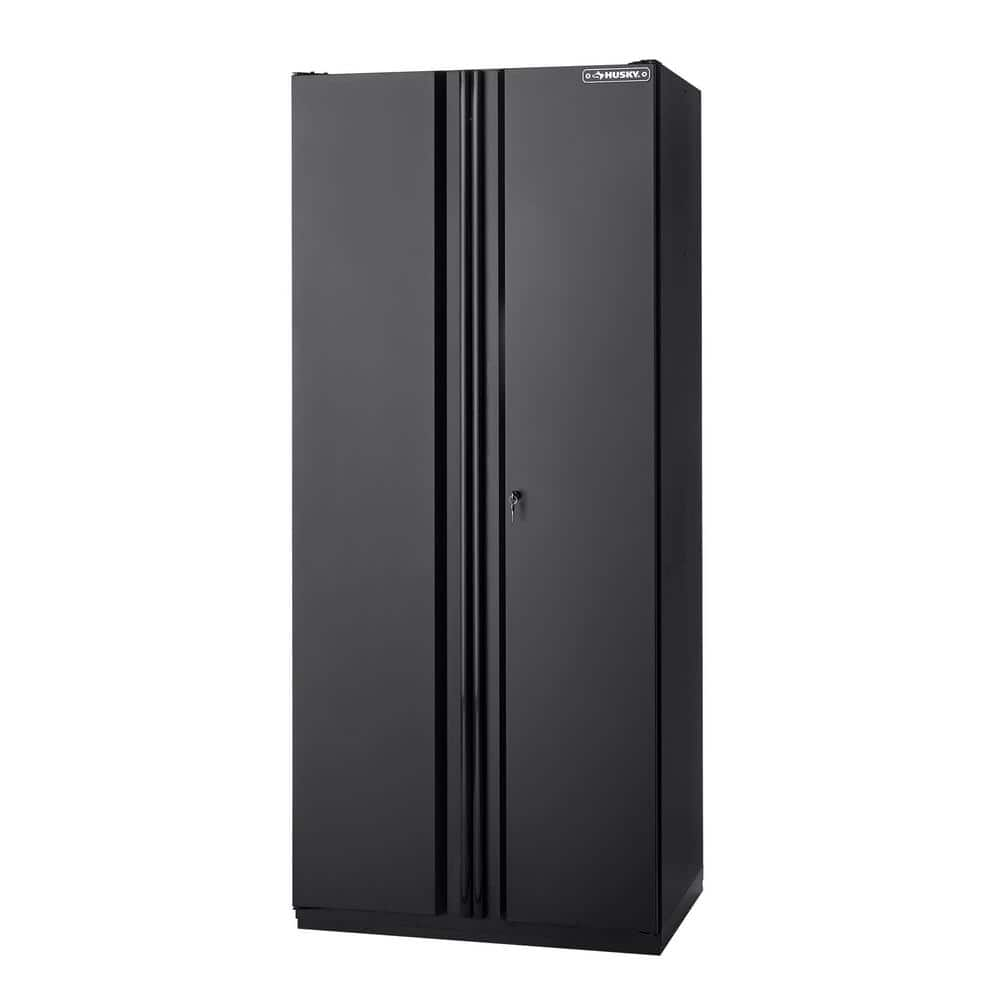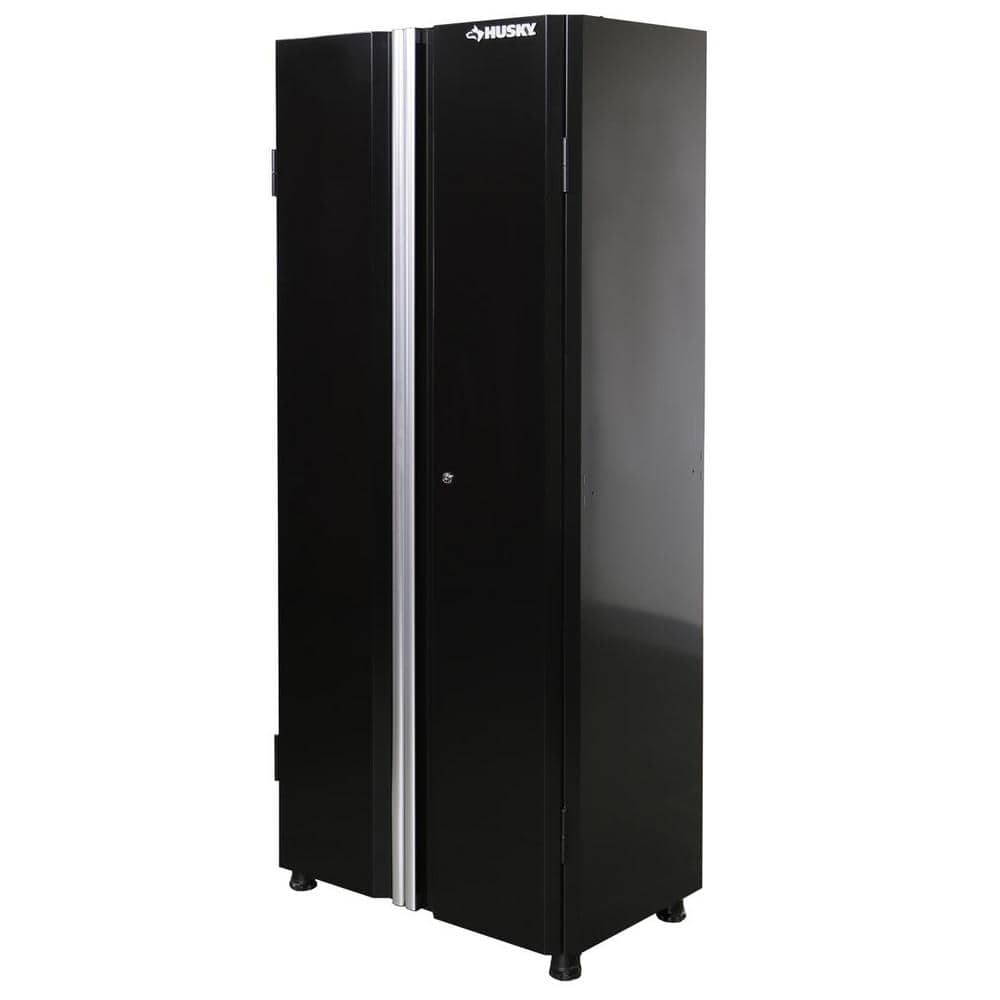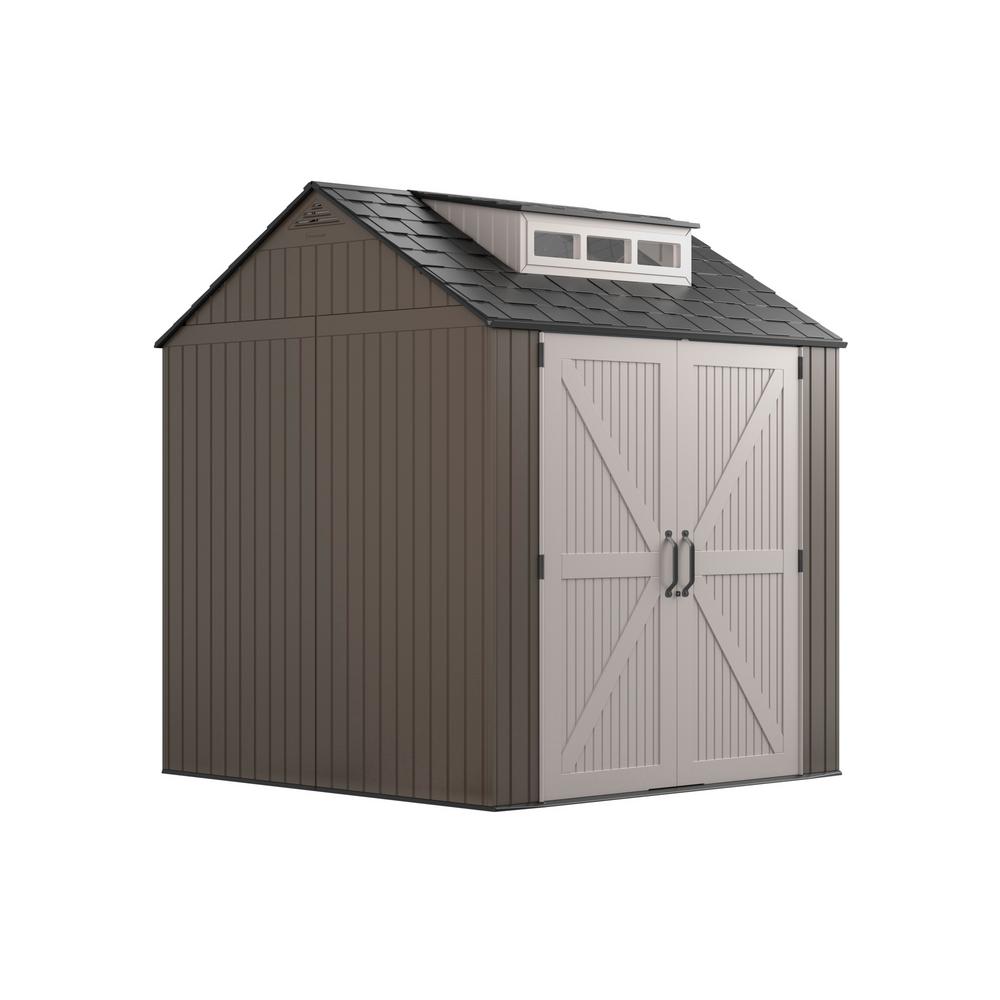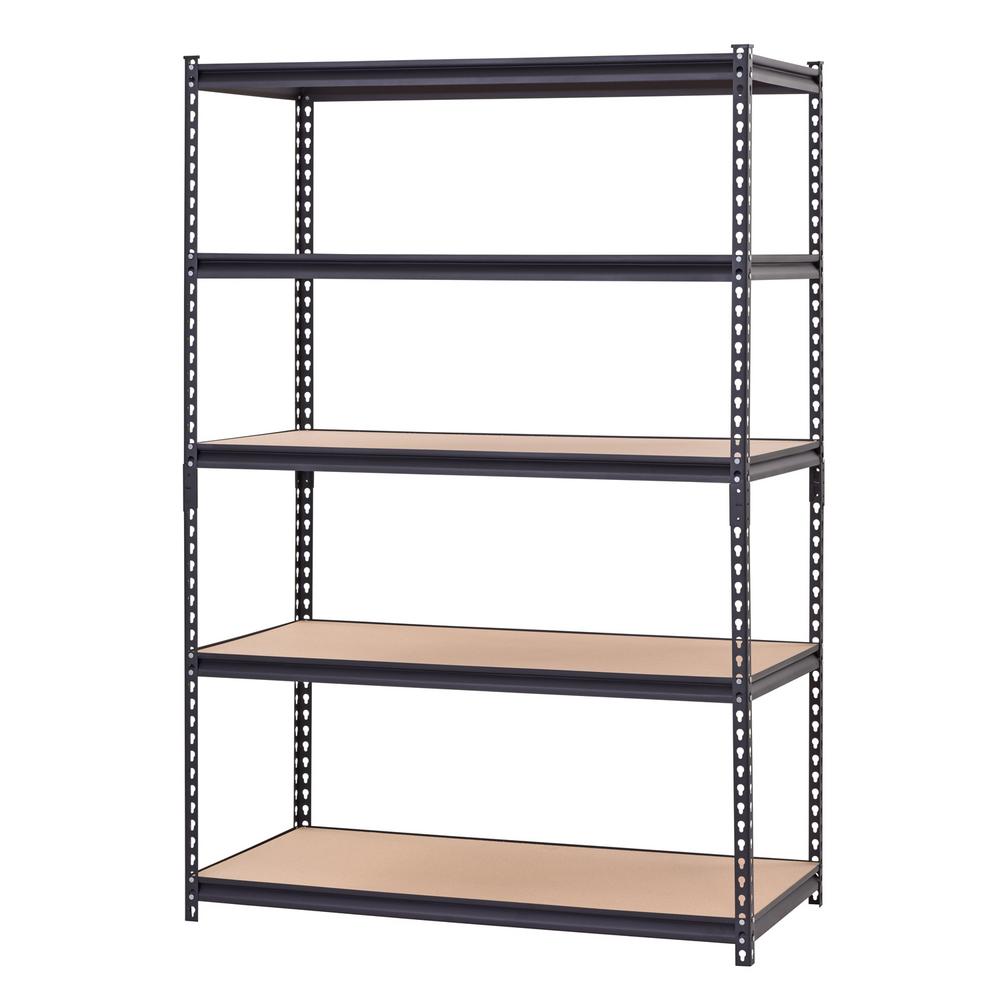Husky Heavy Duty Welded 20-Gauge Steel
Rugged 20-gauge steel cabinet pre-assembled for easy installation. Tall cabinet with 2 adjustable shelves holding up 350 lbs. each.
Store your heavy-duty items with this Husky Freestanding Garage Cabinet. Great for a workshop, mudroom or basement, it offers adjustable shelves that hold up to 350 lbs. and an adjustable drawer that holds up to 120 lbs. It provides cord grommets to run power cords to a power supply and 3-way locks for security. It comes preassembled, making installation easy. Sturdy 20-gauge steel construction makes it built to last.
- Tall locker cabinet features adjustable shelves that can hold up to 350 lbs.
- Adjustable drawer that can support up to 120 lbs.
- Top of the cabinet can hold 200 lbs., making the total weight capacity of the tall locker cabinet a 1,370 lbs.
- Bottom of the locker has a kick plate that prevents screws or small parts from rolling under and getting lost, and the bottom shelf has an adjustable lip that lifts up to form a basket, keeping balls or other gear from rolling away
- Unique sleeved bottom skirt hides the feet during the feet adjustment process
- Integrated cord grommets in the back wall allow you to charge power tools or leave gear like air compressors plugged in while keeping them organized and safe behind a 3-way locking door
- Unit Dimensions: 36 in. W x 24 in. D x 81 in. H
Additional information
| Assembled Depth x Height x Width (in.) | 24 x 81 x 36 |
|---|---|
| Shelf Weight Capacity (lb) | 350 |
| Manufacturer Warranty | lifetime |






by Navy
Please dont pay attention to the 1 star as it deals with shelves yes it comes it two shelves and a drawer- it says that not sure why everyone is surprised and giving bad reviews. The shelf issue is not this product issue. Do your research before buying. As for the drawer coming out it worked just like they said in the manual- just make sure you push them all the way down and up. I love this piece and would recommend it to anyone mine did come missing a shelf but that issue was resolved right away.
by Chris
Love these cabinets, Pro: easy to install Con: would be even better if it came with more shelves, Shelves can be ordered but might take a while. I requested some but they were not able to tell when I could expect to see them.
by James
As advertised. Arrived ahead of schedule, intact, and easy to maneuver into place with dolly.